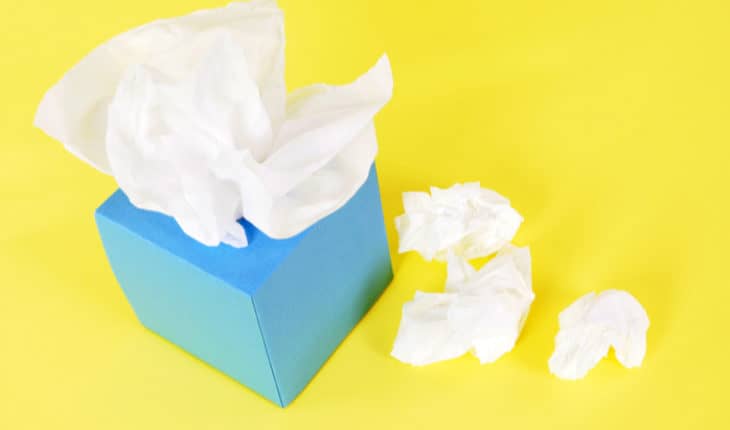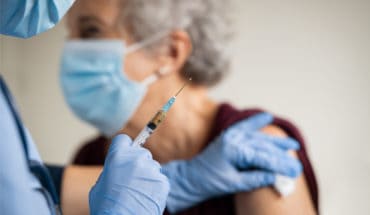How can we manage the inevitable rise of common childhood illnesses as kids go back to school? Dr Punam Krishan, GP gives advice on how we can manage sickness in in the “new normal” post lockdown world.
“Nobody anticipated a pandemic and having never lived through one before, it has been a steep learning curve for all involved as we have tried to create “new normal” ways of living our life until such times actual “normality” returns. As a GP and mother to two young children myself, I can appreciate just how challenging it has been but one thing most parents and healthcare workers would agree on is that during the lockdown period, we saw less of the common childhood infections such as colds, tummy bugs, chicken pox etc. It has been an interesting time in the world of medicine as we have learned about the effects of social behaviours on health and the spread of infectious diseases but as we come out of restrictions, what can we expect?
Prior to the pandemic, I would routinely see young children coming in with runny noses, coughs, fevers, sore throats, rashes, tummy bugs to name a few of the common ailments. When children mingle and play together, sharing things, coughing and spluttering over each other, they spread germs. Whilst no parent enjoys it when their little one catches one of these common viral infections, we know that it does aid their immunity, helping them to build up antibodies to be able to fight those infections more effectively the next time. During lockdown then, when children were not around other, they did not have exposure to such infections and therefore we saw less cases.
Over time, our immunity can drop to certain viruses and bacteria and this is one of the reasons why, post-lockdown, we are seeing a rise in the number of young children with typical ailments we would normally see in winter months as they start mingling and socialising again. It has been an anxiety-provoking time for parents as all the common ailments have similar signs and symptoms to COVID which include fever, cough, runny noses and loss or change in sense of taste and smell. Because of the heightened awareness, coupled with anxiety about testing every time a child gets a fever, I can understand it can feel overwhelming. Trust me, I go through the same waves when my baby or son get poorly. However, I want to reassure you that if your little one is catching everything that is going around the school or nursery, try not to worry.
Some children will be coming into contact for the first time with other contagious childhood infections such as chicken pox, this is normal. It is simply because they have not had exposure to the usual viruses that circulate but they will start to mount their immune responses again.
A recent survey[1] by PoxClin CoolMousse found that 62% of parents are worried about a rise in common illnesses this autumn. Furthermore, 65% are worried their children might have to miss even more school this autumn term, because of back-to-school bugs and seasonal illnesses.
One of the positives from the pandemic has been a heightened awareness of infection control. Pre-pandemic, as a collective, people didn’t stop to think of the impact of good hand hygiene or about catching their cough or sneeze and even wearing masks and social distancing in crowded spaces. We have all learnt more about how to keep ourselves protected and our kids have too. Teaching children from a young stage to protect themselves is an invaluable skill and whilst we cannot wait to see the back of COVID, we can focus on some of the positives.
There are things you can do ahead of the winter surge of non-covid common infections.
- First of all continue to encourage your children to continue practicing good hand hygiene with hand washing and sanitiser. This will not only protect against COVID but will also be effective against other viruses and bacteria too.
- If your child is old enough and willing to do so, continue to encourage face mask wearing in indoor and crowded spaces like public transport and shopping centres. Most of the common viruses travel through the air in droplets and enter via the nose and mouth. Whilst it’s not fun wearing them, in selected spaces, the protection will go a long way to prevention.
- A fever, whatever the perceived source, requires a PCR test so do this every time to rule out COVID.
- Do your best to strengthen the immune systems by ensuring the family is eating balanced and healthy, colourful rainbow plates and by exercising and prioritising good sleep. By doing this you are starting off in a strong position should any nasties get into the system.
- Preparation is key! Ensure your medicine cupboard is stocked up with medicines for common ailments.
- If you are worried in any way, speak to your pharmacist or call your GP.
One of the most common infections we have seen a surge in is chicken pox. Again, due to not interacting and socialising with other people, we had seen less of this over lockdown. It is important to remember that chickenpox is a common infection and although we see it more in young children, you can get it at any stage. Usually, it gets better on its own after 1-2 weeks but if you are worried about your child, then do call your GP.
Most cases of chickenpox start with some early signs like lethargy and mild fever. Remember if your child does develop a fever, you must do a PCR test to rule out COVID. The management involves encouraging your child to:
- Keep hydrated – small sips of water frequently. You can try ice lollies or frozen fruits too if they don’t feel like drinking.
- Paracetamol is effective if your child is in pain or has a high temperature
- I recommend Poxclin CoolMousse for any itching lesions – the mousse means it’s easy and hygienic to apply to a large surface area. It helps to cool the skin, reduce the irritation and inflammation, as well as reducing the risk of infection and scarring. You can pop this in the fridge to give it a soothing effect.
- Gloves and socks are effective for younger children to avoid scratching the spots and jeep nails short as any cut to the skin can introduce bacteria leading to secondary skin infections.
- Bathing in cool water can be soothing and remember to pat dry and not rub.
- Keep clothes loose and cotton to avoid any irritation to the spots.
- Plenty of cuddles and downtime.
[1] An online survey was conducted by Atomik Research among parents of under 18yo in the UK. The research fieldwork took place on 3-4 August 2021. Atomik Research is an independent creative market research agency that employs MRS-certified researchers and abides to MRS code.
- Managing common childhood illnesses this time around - 3rd September 2021
- Thrush and vaginal health - 18th May 2021







